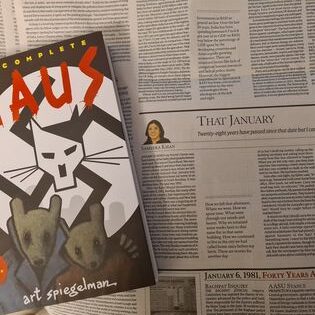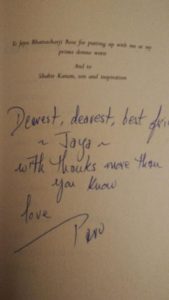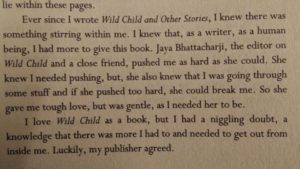Academic Mini Chandran’s latest book “The Writer, The Reader and The State: Literary Censorship in India” is fascinating. It is also pertinent and must be read. Following is an extract, used with permission, from the book about literary censorship and the maintenance of a banned books list by the Indian government authorities.
Read on… .
Procedure of Censorship
The actual process of censoring books in India is a curious business. The most common censorship practice is to prevent a book from reaching the readers after it has been published. This can be done through a court of law, or a governmental order. It is very rare to have a book prevented from publication in our country simply because there is no system of vetting a book before publication or ‘book certification’ like we have for our films. A writer can write and publish whatever she wants but, if need be, will have to suffer the consequences of her action.
There are no obvious laws to this effect and nobody wants to own up to this rather sordid affair of clamping down on free expression. Rajeev Dhavan notes that all orders to ban are given by the Home Ministry: “Banning books with the full regalia of official notifications is now a thing of the past. Much of the banning is done under the rules. The most important of those were framed in 1955 and 1956. Under a general notification of June 8, 1955 (later to be amended) books, magazines, pamphlets and like publications which, taken as a whole, portrayed the commission of offences, acts of violence and cruelty, incidents of a repulsive and horrible nature or glorifying vice which might corrupt or render those under twenty years of age irresponsive to the finer side of nature or to moral values could not be imported” (“Book Bans are not New”). He is referring specifically to the Customs Act here and observes how The Satanic Verses was banned on the basis of a brief letter sent by the then Prime Minister Rajiv Gandhi. As observed earlier, banning under the Customs Act means that the ‘culprit’ is denied the right to state his defence in a common court of law. A ban and forfeiture as per the Criminal Procedure Code is the ‘kindest’ as it at least provides the writer with a forum to argue his case.
Pre-publication ban, post-publication ban, arm-twisting the author / publisher to withdraw the offending book without any official or legal coercion, removing the book from the syllabus of a university–all of these acts can be construed as official and unofficial acts of censorship. We can identify three major ways in which books can be banned –
- Books can be denied entry as per the Customs Act like The Satanic Verses, where Rushdie could not defend himself in a court of law.
- They can be declared obscene / seditious/ blasphemous as per the IPC and the author / bookseller can be hauled to court, like Lady Chatterley’s Lover. The book can be confiscated as per the CrPC and it also allows the author to file an appeal in a High Court against the confiscation. The court becomes the final censor here as it can uphold or deny the allegation and decide the fate of the book and the author.
- The book can be declared unacceptable by a particular group of people for reasons they know best and harass the writer flouting all social and legal norms. The government can then ask the author to withdraw the book or ban it under the relevant section of the IPC, citing reasons of law and order or offence to religious sensibilities. This is what happened to James Laine who wrote Shivaji: Hindu King in Islamic India.
If this is a rough outline of how to ban in India, there is the other important question of who bans? Interestingly I discovered that there is no simple answer to this question. I made an attempt to get this information, courtesy the RTI, and underwent a very Kafkaesque experience. Though we have information about books banned in India since 1947, it is very difficult to get an official list of books banned in India. The office of Home Ministry in North Block looked surprised and almost had a very British old-maidish expression like “Banned books! Oh dear! Whatever gave you the idea?!” Banning, they grandly told me, was not the Central Government’s and least of all the Home Ministry’s business. If a book creates a problem, the respective state governments are asked to take action against them. However, I was advised to file an RTI seeking the information. The application was transferred to the Deputy Secretary (Home) to the Government of India who duly informed me that “…this Ministry [Home] does not maintain a list of books that have been banned in India since 1947. As such, it is not possible for this Ministry to provide the information desired by you.”
However, journalist Manini Chatterjee of the Indian Express who wrote about the books we are still not allowed to read in independent India after 50 years of Independence, recalled that she had got a list of banned books without much effort from the same Ministry of Home in North Block. Although this is the ‘official’ take on book banning, we can discern a certain method in the madness. For instance, the government of Delhi (and other state governments) has a certain procedure. After a book is printed, according to the Book Registration Act it is sent to the Home Ministry where a press officer scrutinizes it for objectionable content. If s/he finds it problematic in any sense, s/he sends it to a screening committee. This committee that is headed by the Secretary of Home Affairs and consists of intellectuals and other senior officers of the IAS, IPS and CBI, examines the book and decides if it has to be censored in places or banned altogether. The final authority, however, is the Lieutenant Governor of Delhi who has the discretionary authority to decide on the banning. For allegedly obscene material the book is also sent to the press department of the Delhi police crime branch which examines it. Then it is sent to the press officer in the Home Ministry from where it follows the same procedure as explained above (Gupta 2002, p.213).
The censorship procedure is more or less the same for other state governments as well. In Kerala, for instance, two copies of all printed books and magazines have to be submitted to the Public Relations Director’s Office. These are vetted by the Information Officer (Research & Reference) who is under the PRD. In case of finding objectionable matter in any book, s/he refers the matter to the police who are empowered to confiscate the offending material as per our Criminal Procedure Code. The truth is that very few books have been banned in recent history and this explains the complete bewilderment on the part of the very same government officials when questioned about censorship. “There is absolutely nothing of that sort,” they vigorously deny. And then, as an afterthought comes: “The only books that we might perhaps recommend for confiscation are, you know, very obscene ones like ‘Sexercises’ and so on.” Apparently the requirement by the Registration of Books Act to submit two copies of all printed books is not seen as an attempt to regulate printed matter at all. This is speaking volumes about the efficacy of a bureaucratic system where the right hand does not know what the left is doing and there is obviously no brain that seems to be functioning anywhere! However, as we shall see, these laws have been successfully implemented to prevent books from reaching readers.
Mini Chandran The Writer, The Reader and The State: Literary Censorship in India Sage, New Delhi, India, 2017. Hb. pp. 695
28 July 2017




